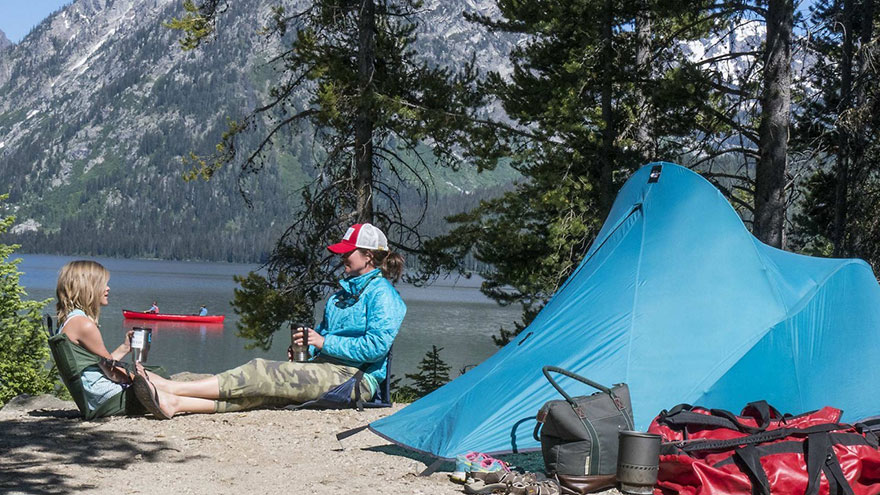Grand Teton and Backcountry Camping
Jagged mountains thrust snowy peaks into the sky at Grand Teton National Park in western Wyoming. The park, located just south of Yellowstone National Park, is an outdoors enthusiast’s paradise, with opportunities to hike, boat, fish and view abundant wildlife, including elk, moose, bald eagles and grizzlies.
Enjoy the majestic beauty right outside your tent flap at one of the park’s five campgrounds, or get away from it all at a backcountry campsite.
Backcountry Permits
You need to get a backcountry permit to camp overnight in Grand Teton National Park. The park reserves one-third of the available backcountry campsites in advance, with the remainder available on a first-come, first-served basis at the park’s permit offices.
To reserve a site in advance, you can send a request online, via fax or through the mail as early as January 1. You must pick up your permit at the Moose Visitor Center by 10 a.m. on the morning of your trip, or it will become available to first-come, first-served hikers.

Camping Options
You can choose from a variety of campsites, depending on whether you are traveling with pack animals or a boat. You’re limited to two or three nights in any camping zone during the peak season of June 1 through September 15, with a maximum of 10 nights total in the wilderness. In winter, you may camp in the backcountry for up to five nights per site.
You’ll find boat-in camping at Jackson Lake and Leigh Lake. You must register your boat for an annual permit at one of the park’s visitor centers before accessing the lakes. Wear a PFD and be prepared for strong afternoon winds that are known for capsizing watercraft.
Trail Conditions
Most of the valley trails are free of snow by mid-June, but high-country areas can remain snowbound through most of August. Some areas require experienced use of an ice axe for much of the summer. Check with a park ranger for snow conditions before setting out and make sure you have proper equipment and clothing before setting off into the backcountry. It is a good idea to carry traction coils early in the season even at low elevations.
Expect storms throughout most of the summer and plan to be off open ridges before they roll in. Temperatures can drop by as much as 40 degrees within a matter of minutes, so be sure to carry warm clothing layers and storm gear. Snows may fall as early as mid-August at the highest elevations, but accumulation is usually minimal early in the season.
Altitude
If you’re not from a high elevation, your lowlander lungs will work especially hard during the first two to three days you spend in the park. Trails into the backcountry begin at 6,800 feet, and you’ll end up at 10,000 feet at some backcountry sites. With every respiration, your lungs exhale your body’s moisture, which can hasten symptoms of altitude sickness.
Prepare for your backcountry camp-out by drinking extra water and other hydrating fluids for a few days before your arrival, and continue drinking extra fluids until you feel acclimated. Be sure to pack some pain reliever and antacid to help you cope with symptoms of headache and nausea, and let yourself sleep in the first few mornings to help your body adjust.

